Related Research Articles

A battalion is a military unit, typically consisting of 300 to 1,200 soldiers commanded by a lieutenant colonel, and subdivided into a number of companies. In some countries, battalions are exclusively infantry, while in others battalions are unit-level organizations.
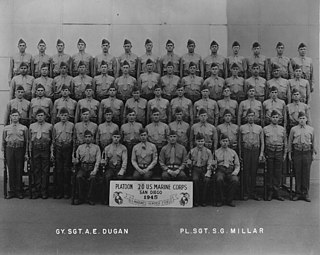
A platoon is a military unit typically composed of two or more squads, sections, or patrols. Platoon organization varies depending on the country and the branch, but a platoon can be composed of 50 people, although specific platoons may range from 10 to 100 people. A platoon is typically the smallest military unit led by a commissioned officer. The platoon leader is usually a junior officer—a second or first lieutenant or an equivalent rank. The officer is usually assisted by a platoon sergeant.
The School of Infantry (SOI) is the second stage of initial military training for enlisted United States Marines after recruit training. Since the initial training pipeline is divided between coasts, Marines from areas east of the Mississippi River usually graduate from MCRD Parris Island and move on to SOI at SOI East, while those from the western half of the nation attend MCRD San Diego and move on to SOI West at the Camp San Onofre area of Camp Pendleton in California. Female Marines are trained at both SOI East and SOI West. The School of Infantry's training mission ensures "Every Marine is, first and foremost, a Rifleman". At SOI, Marines with the Military Occupational Specialty of infantry are trained at the Infantry Training Battalion (ITB), while all non-infantry Marines are trained in basic infantry and combat skills at the Marine Combat Training Battalion. SOI marks a transition in the professional training of entry-level students from basically trained Marines to combat-ready Marines.
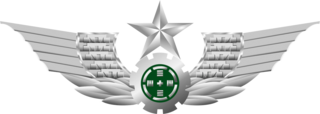
The People's Liberation Army Ground Force is the land-based service branch of the People's Liberation Army and the largest and oldest branch of the entire Chinese armed forces. The PLAGF can trace its lineage from 1927 as the Chinese Red Army; however, it was not officially established until 1948.
A weapons company, sometimes called a manoeuvre support company, is a company-sized military unit attached to an infantry battalion to support the rifle companies of the battalion. It usually possesses some combination of machine-guns, mortars, anti-tank missiles, anti-aircraft missiles, reconnaissance vehicles and, sometimes, assault pioneers.
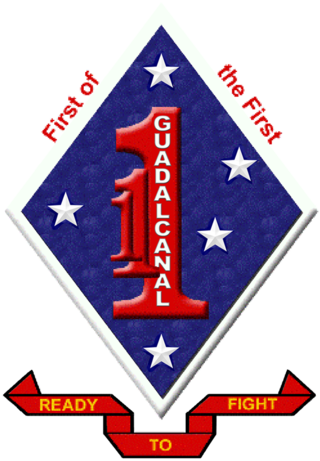
1st Battalion 1st Marines is an infantry battalion in the United States Marine Corps based out of Camp Pendleton, California, consisting of anywhere from 800 to 2,000 Marines and Sailors, but the number fluctuates depending on the Battalion's mission. They fall under the command of the 1st Marine Regiment and the 1st Marine Division. Commonly referred to as "The first of the First."

2nd Light Armored Reconnaissance Battalion is a fast and mobilized armored terrestrial reconnaissance battalion of the United States Marine Corps. Their primary weapon system is the 8-wheeled LAV-25 and they fall under the command of the 2nd Marine Division and II Marine Expeditionary Force. The unit is based out of the Marine Corps Base Camp Lejeune, North Carolina. The current mission statement of the battalion is: To perform combined arms reconnaissance and security missions in support of the Ground Combat Element (GCE) of a Marine Air-Ground Task Force (MAGTF). Its mission is to conduct reconnaissance, security and economy of force operations, and, within its capabilities, limited offensive or defensive operations that exploit the unit's mobility and firepower.
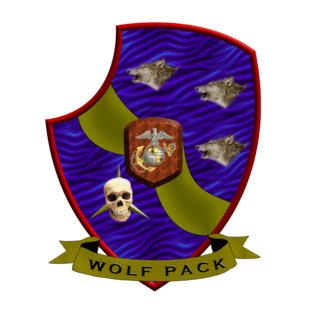
3d Light Armored Reconnaissance Battalion(3D LAR BN) is a fast and mobilized armored terrestrial reconnaissance battalion of the United States Marine Corps. Their primary weapon system is the LAV-25 and they are part of the 1st Marine Division and I Marine Expeditionary Force. The unit is based out of the Marine Corps Air Ground Combat Center Twentynine Palms, California.
A regimental combat team (RCT) is a provisional major infantry unit which has seen use by branches of the United States Armed Forces. It is formed by augmenting a regular infantry regiment with smaller combat, combat support and combat service support units.

2nd Assault Amphibian Battalion is a mechanized battalion of the United States Marine Corps. Their primary weapon system is the Amphibious Assault Vehicle. The battalion is a separate battalion within the 2nd Marine Division and the II Marine Expeditionary Force. The unit is based out of the Camp Lejeune, North Carolina

The Israeli Infantry Corps is a corps in the Israel Defense Forces. It is a maneuvering corps which primarily relies on infantry troops. It includes several regular and reserve service units and brigades which are operationally commanded by the IDF's regional commands.

The United States Marine Corps is organized within the Department of the Navy, which is led by the Secretary of the Navy (SECNAV). The most senior Marine commissioned officer is the Commandant of the Marine Corps, responsible for organizing, recruiting, training, and equipping the Marine Corps so that it is ready for operation under the command of the unified combatant commanders. The Marine Corps is organized into four principal subdivisions: Headquarters Marine Corps, the Operating Forces, the Supporting Establishment, and the Marine Forces Reserve.
A Marine expeditionary brigade (MEB) is a formation of the United States Marine Corps, a Marine air-ground task force of approximately 14,500 Marines and sailors constructed around a reinforced infantry regiment, a composite Marine aircraft group, a combat logistics regiment and a MEB command group. The MEB, commanded by a general officer, is task-organized to meet the requirements of a specific situation. It can function as part of a joint task force, as the lead echelon of the Marine expeditionary force (MEF), or alone. It varies in size and composition, and is larger than a Marine expeditionary unit (MEU) but smaller than a MEF. The MEB is capable of conducting missions across the full range of military operations.
In the United States Marine Corps, the ground combat element (GCE) is the land force of a Marine Air-Ground Task Force (MAGTF). It provides power projection and force for the MAGTF.
The United States Marine Corps' Anti-Terrorism Battalion was a specialized infantry battalion and a Special Operations Capable (SOC) unit. The battalion was disbanded in 2013.
A Combined Anti-Armor Team or Combined Arms Assault Teams (CAAT) is an organization of a United States Marine Corps weapons company where one or more platoons are operated in a detached role to conduct reconnaissance missions and combat ground armored vehicles and air defense vehicles with heavy weapons systems. CAATs often use weapon systems such as M2 .50 caliber machine guns, Mk-19 grenade launchers, and anti-armor missile systems such as BGM-71 TOW missiles and/or FGM-148 Javelins.
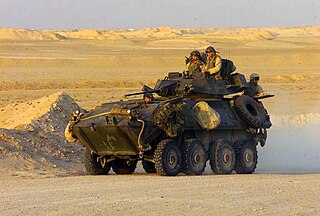
The United States Marine Corps Light Armored Reconnaissance Battalions, or LAR Battalions, are fast and mobilized armored terrestrial reconnaissance units that conduct reconnaissance-in-force (RIF) ahead of the battalion landing teams or division infantry forces. They mainly provide the Marine Air-Ground Task Force and the Marine Expeditionary Unit commanders vital intelligence of the enemy.

The Battle of Shewan was a military engagement between Coalition forces and Taliban insurgents that took place on August 8, 2008, near the village of Shewan in the Bala Buluk district, Farah Province, Afghanistan.

The 15th Infantry Division was established in November 2015, The troops were initially trained by Iraqi trainers for 6 months and then the troops entered in training sessions for a further 6 months under the coalition forces at Camp Taji. The division is considered one of the strongest divisions in the ground forces in terms of training, equipping and arming
References
- 1 2 3 "THE CASE FOR EMPLOYING THE MOBILE ASSAULT COMPANY CONCEPT THROUGH THE SPECTRUM OF WARFARE" (PDF). U.S. Army Command and General Staff College. Archived (PDF) from the original on January 2, 2020. Retrieved 2020-01-01.
